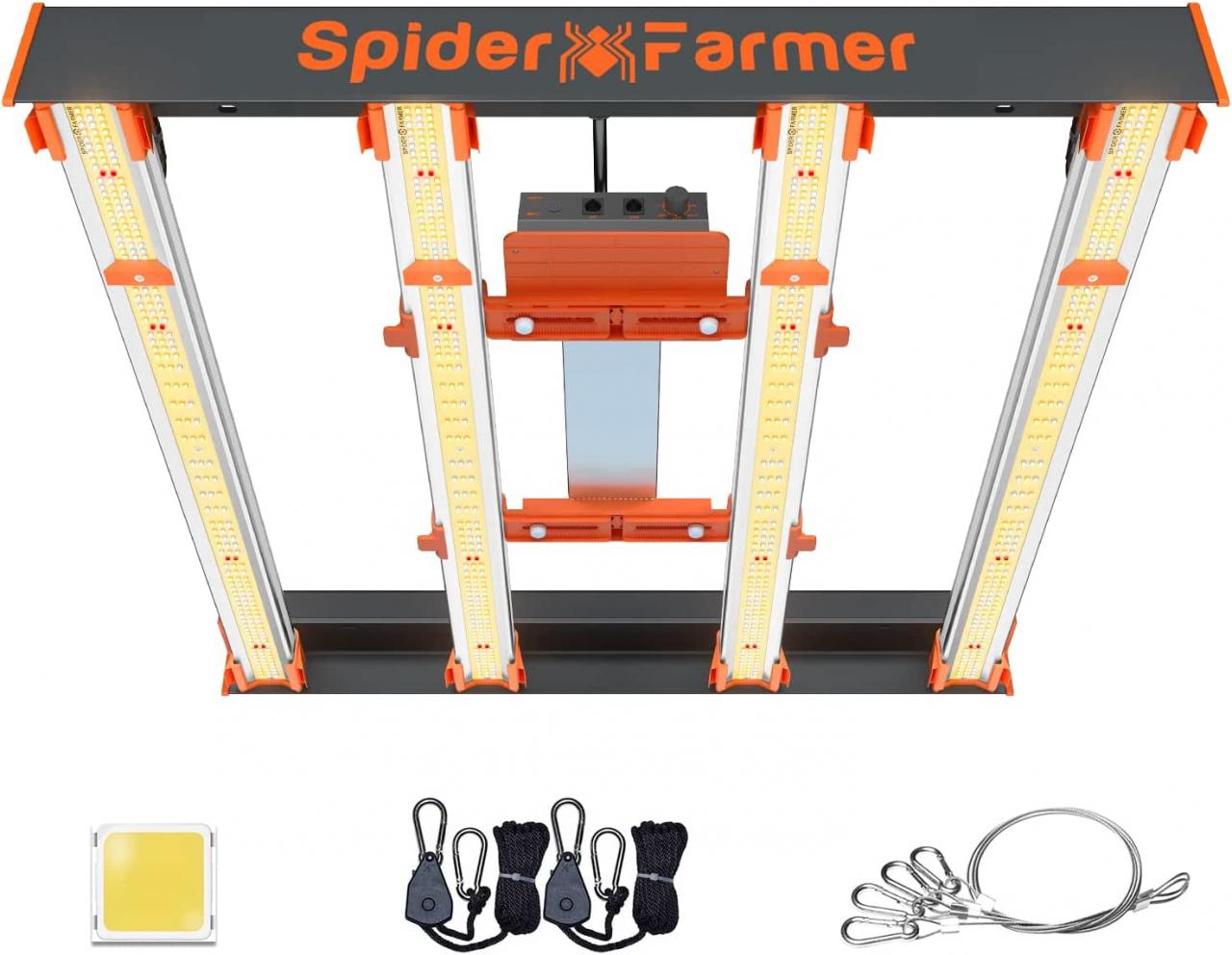When it comes to indoor gardening, the right grow light can make all the difference in the success of your plants. The Spider Farmer SE3000 LED Grow Light promises to deliver exceptional performance and efficiency, but is it the right choice for your needs? Let’s explore the pros and cons of this product to help you decide.
Pros of the Spider Farmer SE3000 LED Grow Light
Uniform Canopy Coverage: The SE3000’s unique 4-LED bar design provides more even coverage, especially to the outer edges of your growing area.
High Efficiency: With 896 Samsung LM301B diodes, the SE3000 draws 300 watts and delivers an impressive 826 μmol/s, achieving a PPE of 2.75 μmol/J.
Full Spectrum Lighting: The SE3000 offers a full spectrum of light (2800-3200K, 4800-5000K, 660-665nm) suitable for all stages of plant growth, from seed to harvest.
Passive Cooling: The bar-style design and aluminum heat sinks promote better airflow and heat dissipation, extending the lifespan of the light.
Dimming and Daisy-Chain Capabilities: The SE3000 features a dimming knob for adjusting brightness (10-100%) and a daisy-chain function that allows you to connect up to 60 lights for dimming simultaneously.
5-Year Warranty: Spider Farmer offers a 5-year warranty and local repair centers in the USA, Canada, UK, and Germany for peace of mind.
Cons of the Spider Farmer SE3000 LED Grow Light
Initial Investment: The SE3000 is a significant investment compared to some other grow lights on the market, which may be a deterrent for budget-conscious growers.
Requires Proper Setup: To get the most out of the SE3000, you’ll need to ensure proper placement, height adjustment, and ventilation in your growing space.
Limited Coverage Area: While the SE3000 is suitable for a 3×3 ft growing area, it may not be sufficient for larger spaces or multiple plants.
In conclusion, the Spider Farmer SE3000 LED Grow Light offers a range of benefits for indoor gardeners seeking high-quality, efficient lighting. Its uniform coverage, full spectrum, and advanced features make it a compelling choice for those willing to invest in their plants’ success. However, it’s essential to consider your specific needs and budget before making a purchase decision.
